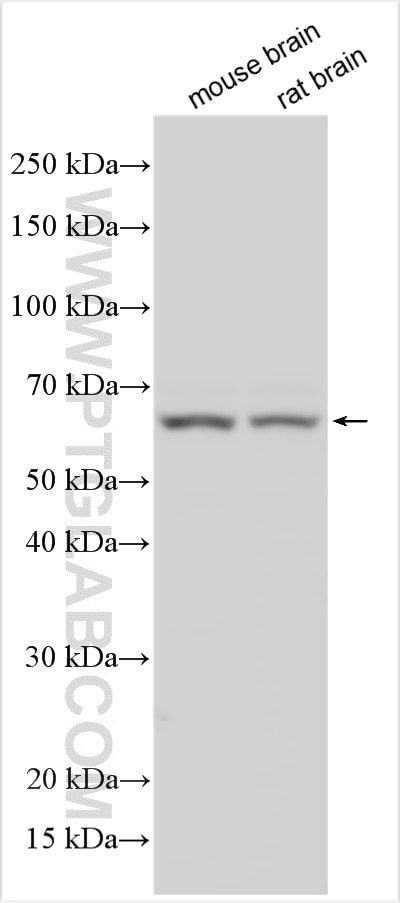Tested Applications
| Positive WB detected in | mouse brain tissue, rat brain tissue |
Recommended dilution
| Application | Dilution |
|---|---|
| Western Blot (WB) | WB : 1:1000-1:4000 |
| It is recommended that this reagent should be titrated in each testing system to obtain optimal results. | |
| Sample-dependent, Check data in validation data gallery. | |
Product Information
24771-1-AP targets MATCHF1 in WB, ELISA applications and shows reactivity with human, mouse, rat samples.
| Tested Reactivity | human, mouse, rat |
| Host / Isotype | Rabbit / IgG |
| Class | Polyclonal |
| Type | Antibody |
| Immunogen | MATCHF1 fusion protein Ag20231 Predict reactive species |
| Full Name | membrane-associated ring finger (C3HC4) 1 |
| Calculated Molecular Weight | 289 aa, 32 kDa |
| Observed Molecular Weight | 60 kDa |
| GenBank Accession Number | BC153124 |
| Gene Symbol | MARCHF1 |
| Gene ID (NCBI) | 55016 |
| RRID | AB_3085754 |
| Conjugate | Unconjugated |
| Form | Liquid |
| Purification Method | Antigen affinity purification |
| UNIPROT ID | Q8TCQ1 |
| Storage Buffer | PBS with 0.02% sodium azide and 50% glycerol, pH 7.3. |
| Storage Conditions | Store at -20°C. Stable for one year after shipment. Aliquoting is unnecessary for -20oC storage. 20ul sizes contain 0.1% BSA. |
Background Information
MARCH1 is mainly found in secondary lymphoid organs, more specifically in the endocytic pathway of dendritic cells (DCs) and B cells (11-15). MARCH1 reduces the half-life of peptide/MHC II complexes by causing their redistribution from recycling endosomes to lysosomes. MARCH1 homodimerizes and also forms heterodimers with others family members (PMID: 22508929).
Protocols
| Product Specific Protocols | |
|---|---|
| WB protocol for MATCHF1 antibody 24771-1-AP | Download protocol |
| Standard Protocols | |
|---|---|
| Click here to view our Standard Protocols |



